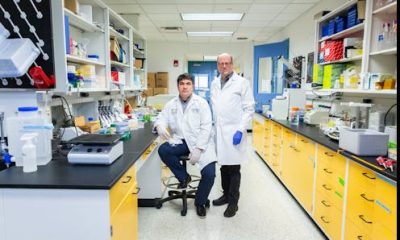A man with a child shows his identification to police officers at a checkpoint in Honduras as migrants attempt to reach the U.S. Photo by WendelPhoto by WENDELL ESCOTO/AFP via Getty Images
Why are so many young Hondurans heading north?
Research by me and two colleagues, published in the peer-reviewed journal International Migration, delved into the factors that motivate young people – those ages 16 to 29 – to leave the central American country and migrate to the U.S.
We found that resilience, which we define as having access to social resources and local support, was a key factor in the decision-making process. This challenges conventional wisdom that suggests those who enjoy some form of employment and strong support networks are more inclined to not seek opportunities elsewhere.
Analyzing survey data from a sample of youth enrolled in a workforce development program in violence-prone areas, we examined young people’s sense of social connectedness, community belonging and support, and desire to migrate.
We specifically looked at how their perceptions and ability to rely on local support systems – something that has been labeled multisystem resilience – influenced their relocation plans.
The reality we found is complex and highlights the nuanced interaction between resilience and migration intentions. It turns out that young, employed Hondurans with greater safety networks have the deepest desire to leave. We hypothesize that this is because when youth are employed and have the economic and social resources to think beyond immediate needs, they are more likely to want to seek better opportunities elsewhere. Multisystem resilience gives them the resources to consider migration as an attainable option.
Because migrating is expensive and individuals in our study come from economically disadvantaged areas, unemployed youth are less likely to have migration intentions. In addition, among those who do not have a job, access to social resources does not affect their plans to move north. In this context, unemployed youth may want to use their resilience to find a job and satisfy their basic, immediate needs rather than to plan moving abroad.
Why it matters
Honduran migrants hoping to reach the U.S. are stopped by police near Agua Caliente, Guatemala, on the border with Honduras.
AP Photo/Santiago Billy
A deeper understanding of the interplay between resilience and migration intentions could help to manage and ideally reduce the desire to leave through supportive policies, such as mentoring initiatives, and interconnected social, economic and environmental programs designed to disrupt the migration pipeline.
In recent years, hundreds of thousands of Hondurans have embarked on perilous journeys to the United States. Previous surveys we conducted also found that 55% of young Hondurans want to migrate within the next three years.
What still isn’t known
While the challenges driving migration from Honduras are clear, important questions remain unanswered about the long-term impacts and potential solutions.
Young people feel torn between leaving loved ones – and being able to provide for their families with remittances – or staying in Honduras and betting on a future of uncertainty. In many ways, Hondurans are between a rock and a hard place, because both options present difficult choices.
What’s next
More work needs to be done in establishing what innovative approaches Honduras could adopt to retain talented young adults and foster local development amid a brain drain that is depleting the country of human capital.
Our research suggests that targeted interventions, such as mentoring programs, could help at-risk youth see a future in their homeland. Such initiatives could provide the necessary support to reduce migration by helping youth through challenging life transitions, including dealing with changes at school or transitioning to adulthood. Appropriately matching mentors selected for their expertise and experience may be able to fortify individuals against the lure of migration.
We want to learn more about what specific skills and personal growth objectives may help young people build a future filled with promise and potential in their homeland.
By understanding the interrelation between resilience and migration intentions, we hope to pave the way for greater collaboration between government agencies, private sector entities and international partners to increase the desire to stay and thrive in Honduras and other Central American countries.
The University of Notre Dame’s Tom Hare and Laura Miller-Graff co-authored the study.
The Research Brief is a short take on interesting academic work.
Maria Estela Rivero Fuentes receives funding from USAID, INL and private donors.













